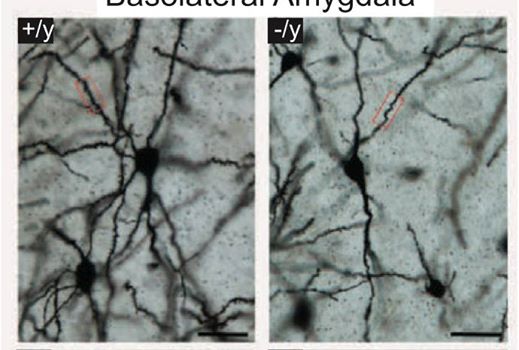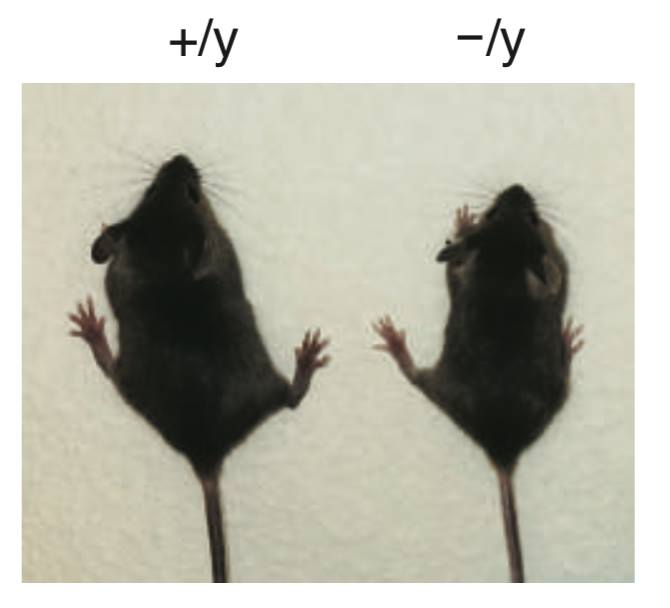What we know about KDM5C
Dr Christina Vallianatos
Introduction
KDM5C is a gene, and like most genes it has a specific function in the cell. The role of KDM5C is to control many other genes. It is sort of a master regulator, controlling whether many other genes are on or off. This is part of a critical process called gene regulation that happens constantly in our bodies, ensuring the right genes are on in the right place at the right time. For example, in your eye you only want genes that are important for eye function to be on, and you want genes important for kidney function to be off. KDM5C is one of several factors that controls this process. For that reason, when KDM5C is lost or mutated it can cause many other genes to also be dysfunctional, leading to widespread effects.
It appears that KDM5C works in almost all cells in our bodies, from when we are developing in the womb until we are very old. Research has shown us that KDM5C is especially important in early development and impacts how the brain develops. This can explain why KDM5C mutations lead to early symptoms, and brain-specific effects. Researchers are continuing to learn about the basic function of KDM5C, and how that relates to brain development and function. The more we learn about what KDM5C is supposed to do and how it does it, we can understand what is happening when KDM5C is not working like it should, and how to combat these changes.
The first paper identifying KDM5C mutations was published in 2005. This does not mean that there were not people with KDM5C mutations before this; it only means that the technology to detect mutations, and knowledge about different disorders was limited until relatively recently. In the last decade especially, there have been huge technological advances in genetics and DNA sequencing, which has expanded into the clinical world and allowed for better methods to identify genetic causes of disorders.
Today, there have been 26 KDM5C mutations published in the scientific literature. Again, this does not mean there are only 26 families out there as clearly there are many more! However, they are hard to find, because research and clinical/medical communities are a bit isolated. Clinical / medical professionals are often not familiar with the research world, and vice versa. Scientists will only know about specific mutations if there are published papers, or if they are familiar with a clinician, etc. For this reason, not many specific KDM5C mutations have been researched. Conversely, a doctor may identify a KDM5C mutation in their patient, but if they are not involved in any research studies, they may never contact a scientist and the information is essentially lost to the scientific community. This is why sites like the KDM5C Patient Registry and the KDM5C Data Collection Program are so critical to helping us identify more individuals with KDM5C mutations. With more families sharing their info, we have more power to connect the dots between what the mutation is, what symptoms are present, what medications work and do not work, etc. to help our understanding and guide future therapeutics.
Mice studies
We have learned a lot about KDM5C from many different studies throughout the years, using different study systems. These include cells, proteins, neurons, mice, and humans. All are important systems to use, that tell us different types of information, in order to learn as much as possible about the different possible functions of this gene.
One of the biggest research advances for KDM5C in the last decade was the creation of the KDM5C mouse model. Researchers at the University of Michigan genetically engineered mice to specifically lose the KDM5C gene, so that they have all their other genes but lack a functional KDM5C gene. They are called KDM5C knock out mice (for the method used to knock out or lose the KDM5C gene). Why mice? Mice and humans share about 80% of the same genes, have similar physiology, and go through similar development stages. Also, you can do a lot of in-depth studies with mice that you simply cannot do with humans, such as looking at brain tissue.
Research so far
Some studies have looked at specific KDM5C mutations present in people. These studies are often done to confirm that the mutation the person has is indeed causing the symptoms. These are important and informative studies, but often do not tell us much new information.
The biggest advances are coming from the KDM5C knock out mice, which has helped us learn a lot about KDM5C disorders. When compared to mice that have a functional KDM5C gene, male KDM5C knock out mice are smaller in body size, display problems in learning and memory, and are more aggressive, which all recapitulate what we see in people with KDM5C mutations. One study showed that female KDM5C mice also have behavioral impairment, in some ways the same and in some ways different than the males. The University of Michigan is currently studying the differences between males and females with KDM5C mutations.
Having the KDM5C knock out mice that replicate human behaviors, we can be confident that this is a good model system, so that anything we learn from the mice has a good chance to correlate back to humans. We are looking at features of these mice and trying to understand the effects of KDM5C loss, and how to alleviate the most disruptive effects.
Brain development
Another extremely informative study identified that when we look at the shape of the neurons (brain cells) in the KDM5C knock out mice, we see that in one area of the brain, the neurons are not formed properly (see Figure 1: the left neuron is from a mouse with KDM5C intact; the right neuron is from a KDM5C knock out mouse). Interestingly, the number of neurons is not affected, only their shape. This tells us that KDM5C is not important in making neurons, because the knock out mice have the right number of neurons; instead it is important in making sure the neurons develop properly, because in the knock out mice the neurons are misshapen. This was important to learn, because it can guide our therapeutic strategy, so we try to help the neuron grow like it should (instead of having a therapeutic to make more neurons, which is not a problem). These studies are helpful to pinpoint where the defects are, and give us clues into how we can correct them with the proper therapeutic.

Growth
Small stature is common to all reported KDM5C individuals in the scientific literature. In our mouse model, the KDM5C knock out mouse engineered to lose KDM5C function, we see this small stature as well. There haven't been any longitudinal studies in humans that I know of (to look at individuals over time), so it is unclear the effects are long term; though the few adults that have been described in research papers also have been shorter, suggesting the small stature will persist into adulthood (no catching up effect). For the mice, we see they are smaller at both young and old ages, again suggesting this persists and won't be corrected with time.

Why this happens, we don't fully understand. The common hormonal problems seen in typical growth deficiencies are not present in KDM5C individuals, which is why common therapies for growth defects (like growth hormone therapies) wouldn't work here. The problem seems to begin very early on, but how and why this is we just don't know yet. KDM5C is a gene that works nearly everywhere in the body, from early in development throughout life. KDM5C is a master regulator controlling other genes, so it may be that one of KDM5C's jobs is to control other genes that dictate body size, and losing KDM5C means losing the ability to properly regulate body size. That is one hypothesis. Continued basic science research, and using mouse models and studying more individuals, will certainly help - more research into all the functions of KDM5C throughout the life cycle and throughout the body is critical to helping us understand features like short stature. In time we will certainly learn more!
For information about the latest research, see the presentations from Rare Disease Day 2020. and the Research page.